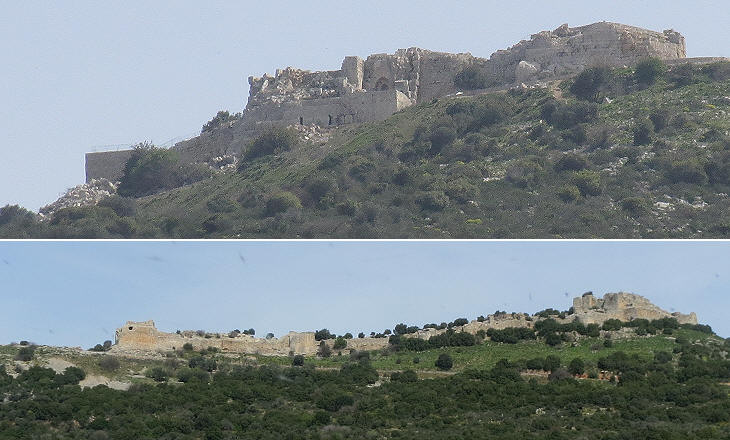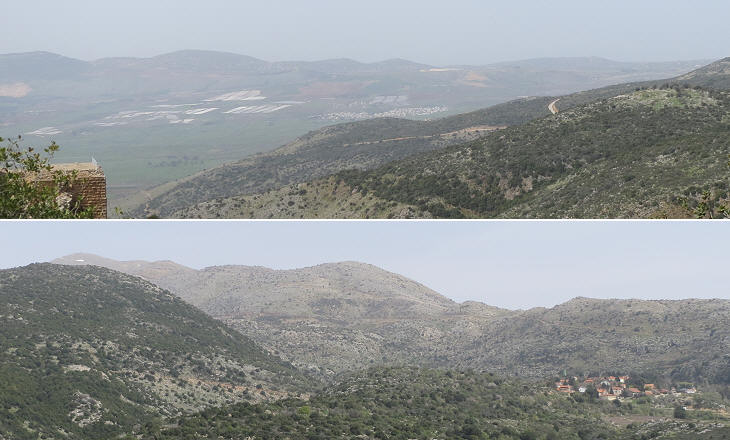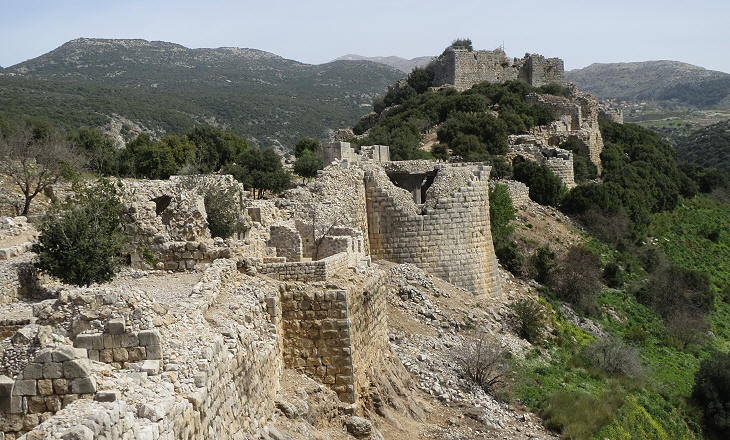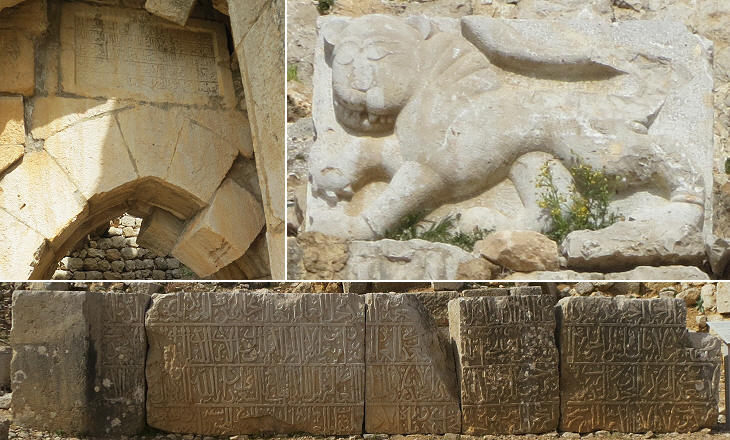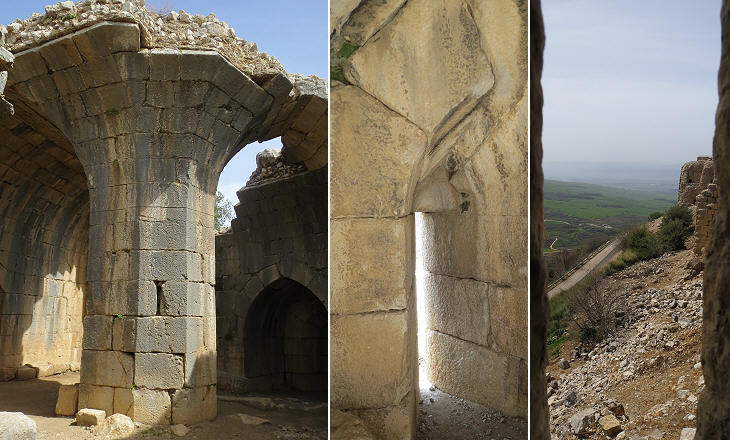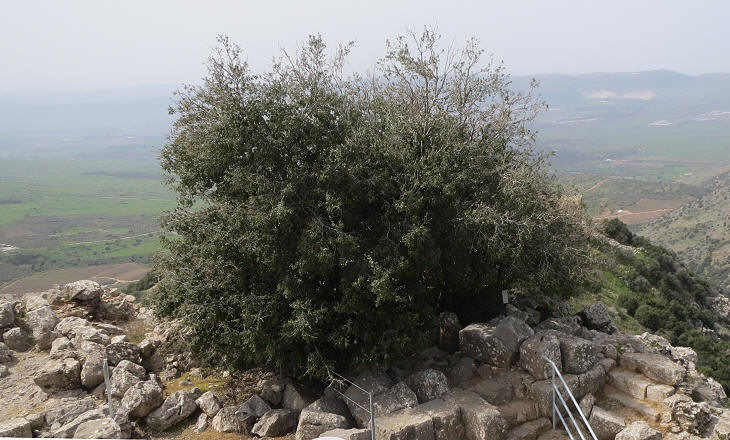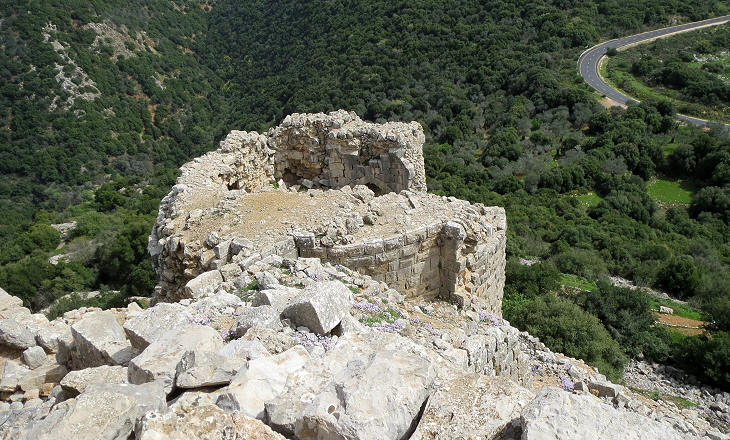  What's New! Detailed Sitemap All images © by Roberto Piperno, owner of the domain. Write to romapip@quipo.it. Text edited by Rosamie Moore. Page added in April 2013. |
 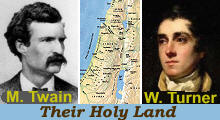 - Nimrod Castle - Nimrod Castle
If you came to this page directly, you might wish to read a page with an introduction to this section first.
Two hours later we reached the foot of a tall isolated mountain, which is crowned by the crumbling castle of Banias (today Nimrod), the stateliest ruin of that kind on earth, no doubt. It is a thousand feet long and two hundred wide, all of the most symmetrical, and at the same time the most ponderous masonry. The massive towers and bastions are more than thirty feet high, and have been sixty. It is of such high antiquity that no man knows who built it or when it was built. It is utterly inaccessible, except in one place, where a bridle path winds upward among the solid rocks to the old portcullis. The horses' hoofs have bored holes in these rocks to the depth of six inches during the hundreds and hundreds of years that the castle was garrisoned. We wandered for three hours among the chambers and crypts and dungeons of the fortress, and trod where the mailed heels of many a knightly Crusader had rang, and where Phoenician heroes had walked ages before them. Mark Twain - The Innocents Abroad - 1869.
The fortress is situated along the historical road linking Syria to the Holy Land and Twain considered it to be part of the latter because of its commanding views over the River Jordan valley. At that time the whole region was part of the Ottoman vilayet of Syria. In 1888 a Lebanon vilayet was created out of that of Syria. In 1922 the fortress was included in the territory of the French Mandate of Syria. In 1967 it was conquered by Israel and it is now one of the archaeological sites of the Israel Nature and Parks Authority. Today the fortress is named after Nimrod, a biblical figure of mighty hunter and king, but when Twain visited it its Arabic name was Qalat al-Subeiba (Castle on the Cliff).
Twain assumed that the fortress had been built or conquered by the Crusaders, perhaps because the region housed many of their castles, but he was wrong. The purpose of the fortress, which was built in the early XIIIth century and was limited to the keep, was to defend Damascus from attacks coming from the south, either by the Crusaders who still retained Acre or by the rulers of Egypt. As a matter of fact Damascus was conquered in 1260, but by a Mongol army coming from the north and supported by the Kings of Lesser Armenia and other Christian knights.
The fortress was strengthened by Baibars, Mameluke Sultan of Egypt who conquered the Holy Land and Syria between 1260 and 1271. In 1275 he entrusted its enlargement to Bilik, one of his commanders. The fortress lost importance and it was mainly used as a prison after the Mamelukes conquered Acre in 1291 ending the Crusader presence in the Holy Land. The Mamelukes were unaware of the development of cannon warfare and firearms in the XVth century and they actually regarded the use of the latter as unfit for a Muslim warrior. This led to the end of their power in 1515-17 when Ottoman Sultan Selim I defeated them repeatedly and eventually conquered Cairo.
The design of the round towers built by the Mamelukes to strengthen the fortress is of particular interest. They projected from the walls enough to have slits from which the archers could shoot their arrows from a side position (so-called "enfilade fire"). The structure of the towers was probably based on patterns the Mamelukes had seen in the Crusader fortresses.
We wondered how such a solid mass of masonry could be affected even by an earthquake, and could not understand what agency had made Banias a ruin; but we found the destroyer, after a while, and then our wonder was increased tenfold. Seeds had fallen in crevices in the vast walls; the seeds had sprouted; the tender, insignificant sprouts had hardened; they grew larger and larger, and by a steady, imperceptible pressure forced the great stones apart, and now are bringing sure destruction upon a giant work that has even mocked the earthquakes to scorn! Gnarled and twisted trees spring from the old walls every where, and beautify and overshadow the gray battlements with a wild luxuriance of foliage. M. Twain.
From the mountain's peak its broken turrets rise above the groves of ancient oaks and olives, and look wonderfully picturesque. From these old towers we looked down upon a broad, far-reaching green plain, glittering with the pools and rivulets which are the sources of the sacred river Jordan. It was a grateful vision, after so much desert. M. Twain. The image used as background for this page shows a slit of a round tower. Move to: Introductory Page Banias (Caesarea Philippi) Acre (Akko) Turner's excursion to Kaifah (Haifa) Tiberias Holy sites in Galilee Nazareth Jerusalem Jaffa A Glimpse of Tel Aviv  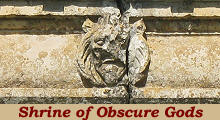 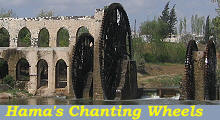 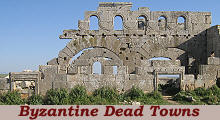 |
